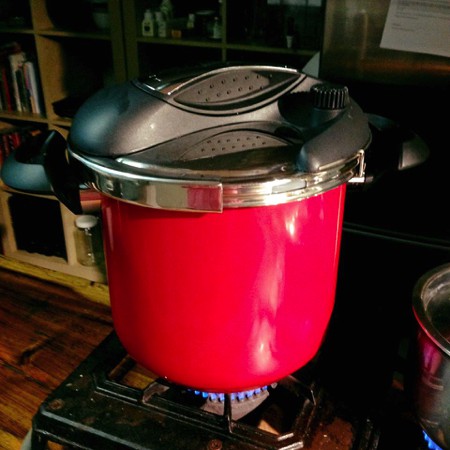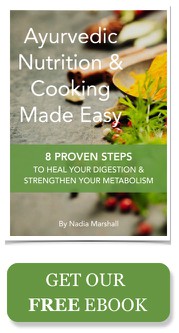By Nadia Marshall
" Pressure...Pushing down on me.. Pressing down on you.."
This one of my favourite songs (the Queen and David Bowie version - see below to play it while you're reading)... but it is also one of my favourite ways to cook!
This is my new Bacarrat Pressure Cooker... isn't she beautiful? Bright red to stimulate my digestive fire and super robust and safe-feeling so there is zero exposion-anxiety. If you haven't got a pressure cooker already, you really should get one. It makes this Ayurvedic diet and lifestyle thing soooo much easier. This blog is all about why you should invest in a pressure cooker too (and no, I'm not getting paid by Baccarat for this plug).
I was inspired to write this blog because we held our Ayurvedic Nutrition & Cooking Course the other day. I had 90 mins to make ghee, cook a kicharee, make 20 date and coconut balls, a ragi porridge and spelt and buckwheat pancakes in front of everyone. That's a lot to make and not a lot of time, especially with ghee thrown in the mix! What to do? The answer? Pressure cook the kicharee. The kicharee I made was all done, perfectly cooked and silky smooth within 7.5 minutes (30 seconds of frying off spices, 7 minutes of pressure cooking). That's a 50% improvement on Jamie Oliver people! Let's just say the group was pretty impressed....
So why the heck is pressure cooking so quick? It's simple really... increasing the pressure of an environment raises the boiling point of water. In the case of pressure cooking, it raises it by about 7 degrees celcius which means your food cooks faster. When it comes to legumes, the pressure itself also has an effect, helping to breakdown and soften the legumes further and making them cremier, smoother and seemingly easier to digest. I can't prove it with a research study but I can see with my own eyes that pressure cooking helps to release the soluable fibre held within high-fibre legumes like mung beans and red lentils - it is the soluable fibre that gives pressure-cooked daal and kicharee its super creamy texture.
But are the pressure-cooked legumes really easier to digest? Well, yes they are because the pressure-cooking also helps to break down certain pesky anti-nutrients like phytic acid and lectins found in some legumes but also pulses, grains, nuts and seeds. Lectins are basically the in-built pesticides of plants that can have a nasty effect on our internal bits and pieces while phytic acid binds to minerals (like calcium, zinc and iron), making them less bioavailable. Cooking, in general, helps to decrease the effects of phytic acid but pressure-cooking is almost twice as effective. In this study done on peas, the phytic acid content of peas soaked overnight and then boiled was only reduced by 29%. But in peas that had been soaked overnight and pressure cooked, the phytic acid was reduced by 54%! Pressure cooking is also on par with fermentation as the best way to reduce the lectins in grains.
What about vitamins? Does pressure cooking destroy them too? Well, no. Counterintuitively, pressure cooking actually preserves vitamins and minerals due to shorter cook times. In one study, pressure cooking retained 90-95% of the vitamins while boiling retained only 40-75%! Vitamins are also preserved because we are preserving the water the food is cooked in rather than throwing it out (in the case of steaming veggies etc). Any vitamins and minerals that leech from the food into the water are then retained in the water which returns to the pot due to the high-pressure environment.
So... Pressure cooking = way faster cooking times, more vitamins, more minerals and less lectins.
Boom.
Job done. I'm out.
Love
Nadia xx
Why Pressure Cooking Rocks...



